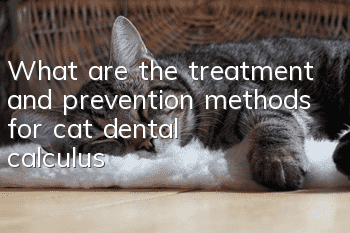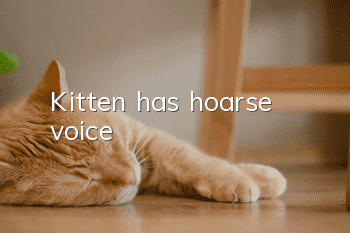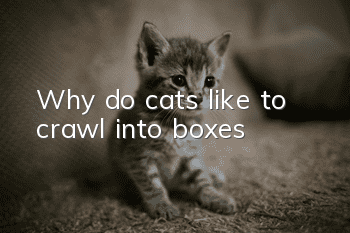What are the treatment and prevention methods for cat dental calculus?

If a cat’s oral cavity is not cared for, it is prone to dental problems, such as gingivitis, periodontitis, stomatitis, etc. However, dental calculus is also a common disease in cats’ oral cavity. The normal color of cat’s teeth is pure white. If we open the cat’s mouth and find that the teeth have turned yellow, we should pay attention to the problem of dental calculus.
Cats that eat soft food tend to have a lot of food residues and bacteria attached to their teeth. I found that most cats over 2 years old suffer from calculus disease, and it occurs most frequently in cats that eat soft and watery food. Cats aged 5 to 8 years old are the most susceptible to calculus disease.
Teeth problems in cats usually first appear: plaque - that is, there is soft, transparent or milky white adhesion on the surface of the teeth, which can be scraped off by gently scraping it with your fingernails; if the plaque is not removed, the minerals in the saliva will This will turn dental plaque into dental calculus. When cats develop dental calculus, it will affect their food intake, digestion and absorption, causing them to become emaciated and have reduced immunity.
Dental calculus mostly occurs in the premolars, especially the upper premolars, and less frequently in the posterior molars, canines and incisors. In the early stages of dental calculus in cats, there are no abnormalities in behavior or eating habits. However, if you open the cat's oral cavity and examine it, you can see a layer of beige dental calculus attached to the upper premolars or other teeth.
As dental calculus gradually increases, it will cause gum damage and periodontitis. At this time, cats will have tooth pain when eating, their food intake will decrease, they will not be willing to eat hard food, and they may even appear to be unable to eat hard food. Food falls out of the mouth, and the mouth salivates and smells bad. At this time, when you open the cat's mouth, you will find that there are calculus of different sizes on the premolars. The gums surrounding the roots of the teeth are red and a little swollen. Teeth with severe calculus will also be loose to varying degrees.
If there is a lot of dental calculus, it is best to have your teeth cleaned. Teeth scaling requires general anesthesia, so be prepared for appropriate care. Nowadays, many hospitals have ultrasonic cleaning and pressing machines, so the technology of teeth cleaning is not a problem. Nowadays, ultrasonic vibrating dental scalers are generally used to clean teeth. At the same time, water is sprayed to cool down the teeth. Therefore, when cleaning the cat's teeth, keep the head lower than the body to avoid water being inhaled into the lungs and causing foreign body pneumonia. Generally speaking, the veterinarian will notice this. If the veterinarian does not pay attention, the owner must remember to keep the cat's head lower than the body. If the cat has severe dental calculus, it will have bad teeth and loose teeth. For such teeth, owners should not feel sorry for them and should have the bad teeth extracted to avoid infection with other oral diseases.
So how to prevent dental calculus?
1. Cats should be allowed to develop the habit of checking their oral cavity and brushing their teeth when they are young. Pet supply stores have animal-specific toothpaste and toothbrushes. Do not use human toothpaste or toothbrushes.
2. Feed cats special cat food.
3. If you can’t buy a cat-specific toothbrush or toothpaste, or your cat has never used a toothbrush or toothpaste and is very resistant to it, there is also a gentler method of cleaning teeth that your cat can accept: wrap medical gauze around your finger, dip it in tea or Use light salt water to gently wipe your cat's teeth, especially the upper premolars. The friction of gauze can also easily remove tartar.
Teeth cleaning is an effective way to deal with cat’s dental calculus, so let’s explain some precautions for teeth cleaning.
1. Anesthesia: There are two ways of anesthesia for cats, injection anesthesia and inhalation anesthesia. If you are in a big city with conditions, it is recommended to use inhalation anesthesia. Inhalation anesthesia is by far the safest way of anesthesia. , cats can wake up from anesthesia after surgery. If the pet hospital in your city does not have inhalation anesthesia, it is recommended to use imported injectable anesthesia as much as possible. Do not eat or drink 10 hours before teeth cleaning and no water for 4 hours. If it is an elderly cat, cardiac and other aspects of the cat should be checked before anesthesia.
2. Teeth cleaning process: Nowadays, teeth cleaning is usually done with an ultrasonic vibrating dental scaler. At the same time, water is sprayed to cool down the teeth. Therefore, when cleaning the cat’s teeth, keep the head lower than the body to avoid water being absorbed. Inhalation into the lungs causes foreign body pneumonia. Generally speaking, the veterinarian will notice this. If the veterinarian does not pay attention, the owner must remember to keep the cat's head lower than the body.
3. Extract bad teeth: If the cat has severe dental calculus, it will have bad teeth and loose teeth. For such teeth, the owner should not be distressed and tolerate them. The bad teeth should be pulled out to avoid infection with other oral diseases.
4. Fasting after surgery: Cats should fast for 24 hours after teeth cleaning, which is beneficial to the recovery of gums.
5. Medication: After scaling your teeth, you should use anti-inflammatory drugs for a period of time and apply them locally to eliminate inflammation and restore the health of your gums.
- Is it cat plague when a cat vomits yellowish paste?
- Cat has fever after vaccination
- Why are pedigree cats expensive?
- What are the characteristics of flame-colored ragdoll cats?
- How to tell the age of a cat?
- What are the precautions for transporting pet cats?
- How to correct a cat’s picky eating
- Food taboos for American wirehair cats
- When is the golden period for cats to develop gill hair?
- How old do cats get their teeth?



